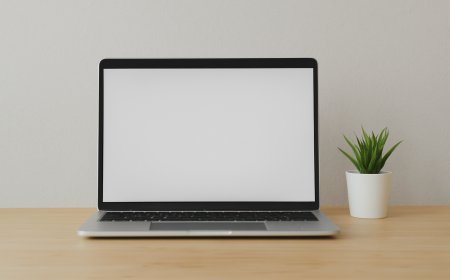How to Set Up Remote Work in Heat
How to Set Up Remote Work in Heat As global temperatures rise and extreme heat events become more frequent, remote workers are increasingly finding themselves working in environments where high temperatures compromise comfort, productivity, and even health. Whether you live in a region with prolonged summer heatwaves, lack access to reliable air conditioning, or simply work from a home office that
How to Set Up Remote Work in Heat
As global temperatures rise and extreme heat events become more frequent, remote workers are increasingly finding themselves working in environments where high temperatures compromise comfort, productivity, and even health. Whether you live in a region with prolonged summer heatwaves, lack access to reliable air conditioning, or simply work from a home office that traps heat, setting up a functional and safe remote work environment in extreme heat is no longer optional—it’s essential.
This guide provides a comprehensive, step-by-step roadmap to help you design, optimize, and sustain a productive remote work setup during periods of intense heat. From environmental controls and ergonomic adjustments to digital tools and behavioral strategies, you’ll learn how to maintain focus, protect your well-being, and ensure seamless collaboration—even when the thermometer climbs.
By the end of this tutorial, you’ll have a clear, actionable plan to transform your workspace into a cool, efficient, and sustainable hub for remote work—no matter how hot it gets outside.
Step-by-Step Guide
Step 1: Assess Your Current Workspace
Before making any changes, evaluate your current work environment. Identify the sources of heat and discomfort. Is your workspace near a window that receives direct sunlight? Are you using a laptop on a non-ventilated surface? Is there poor airflow due to closed blinds or lack of fans?
Use a digital thermometer and hygrometer to measure both temperature and humidity levels. Ideal indoor working conditions range between 68°F and 75°F (20°C–24°C) with humidity levels between 30% and 50%. If your workspace consistently exceeds 80°F (27°C), immediate action is needed.
Take note of the time of day when heat becomes most oppressive. Does your office become unbearable between 1 p.m. and 5 p.m.? Understanding these patterns will help you schedule tasks strategically and prioritize cooling interventions.
Step 2: Optimize Natural Ventilation
Natural ventilation is one of the most cost-effective and sustainable ways to cool your workspace. Open windows and doors on opposite sides of your home to create cross-breezes. This allows hot air to escape while drawing in cooler air from shaded areas.
Use window screens to keep insects out while maintaining airflow. If you live in a noisy area, consider installing acoustic window inserts that reduce sound without blocking ventilation.
Timing matters. Open windows during the early morning and late evening when outdoor temperatures are lowest. Close them during peak afternoon heat to trap cooler air inside. Use blackout curtains or thermal window films to block solar gain during daylight hours.
Step 3: Install Smart Window Treatments
Solar heat gain through windows can raise indoor temperatures by up to 30%. To combat this, invest in window treatments designed to reflect or absorb heat.
Thermal blackout curtains made from tightly woven, light-colored fabrics are highly effective. Look for ones with a reflective backing that bounces sunlight away. Alternatively, apply solar window films—these transparent, adhesive films reduce infrared and UV radiation while maintaining visibility.
For a high-tech solution, consider smart tinting windows or motorized shades that automatically adjust based on sunlight intensity and time of day. These systems integrate with home automation platforms like Google Home or Apple HomeKit for seamless control.
Step 4: Use Evaporative Cooling Techniques
In dry climates, evaporative cooling is a powerful, low-energy method to lower ambient temperatures. Place a bowl of ice in front of a fan to create a DIY air cooler. As air passes over the ice, it cools and circulates through the room.
For a more permanent solution, consider a portable evaporative cooler (also known as a swamp cooler). These devices use water and a fan to cool air through evaporation. They consume up to 75% less energy than traditional air conditioners and work best in low-humidity environments.
Keep a spray bottle of water nearby to mist your arms or neck periodically. This triggers evaporative cooling on your skin, helping regulate body temperature without needing to cool the entire room.
Step 5: Upgrade Your Desk and Chair for Heat Resilience
Traditional office furniture can trap heat and contribute to discomfort. Choose materials that promote airflow and minimize heat retention.
Opt for chairs made from breathable mesh fabric instead of leather or vinyl, which absorb and retain body heat. Look for ergonomic chairs with lumbar support and adjustable armrests to reduce strain in hot conditions, where muscle tension often increases.
For your desk, select a surface made of wood, metal, or glass rather than plastic, which can become uncomfortably warm under direct sun. Use a desk pad made from natural fibers like cork or bamboo to insulate your arms from heat conduction.
Elevate your laptop using a stand to improve airflow underneath. Never place a laptop directly on your lap or a soft surface like a bed—this blocks ventilation and causes overheating.
Step 6: Implement Personal Cooling Devices
When ambient cooling isn’t enough, personal cooling devices can make a significant difference.
Wearable cooling vests with phase-change material (PCM) inserts can absorb excess body heat and slowly release it over several hours. These are especially useful during video calls or deep work sessions.
Handheld battery-powered fans are compact, quiet, and effective. Look for models with multiple speed settings and long battery life. Some even include misting functions.
Consider a desk fan with a built-in air purifier. These combine airflow with filtration to improve air quality while cooling you directly. Position the fan to blow across your workstation—not directly on your body—to avoid drafts that cause discomfort.
Step 7: Adjust Your Work Schedule to Match Thermal Patterns
Human productivity follows circadian rhythms—and heat disrupts them. Your cognitive performance peaks during cooler parts of the day.
Schedule your most demanding tasks—coding, writing, data analysis, or video editing—for the morning hours when temperatures are lowest. Reserve administrative tasks like emails, meetings, and documentation for the afternoon when energy levels naturally dip.
If possible, adopt a flexible schedule that allows you to work during cooler nighttime hours. Many remote workers in hot climates find that working from 10 p.m. to 6 a.m. yields higher focus and fewer distractions.
Use calendar blocking to protect your peak productivity windows. Communicate your adjusted schedule to collaborators so expectations are aligned.
Step 8: Hydrate Strategically and Monitor Health
Dehydration impairs concentration, increases fatigue, and elevates core body temperature. In hot environments, your body loses fluids faster—even if you don’t feel thirsty.
Keep a large water bottle (at least 32 oz) at your desk and refill it every hour. Add lemon, cucumber, or mint for flavor to encourage consistent intake. Avoid sugary drinks and caffeine in excess—they can contribute to dehydration.
Use a hydration tracker app to log your water consumption. Set reminders to drink every 45 minutes. Monitor for signs of heat stress: dizziness, headache, nausea, dry mouth, or dark urine. If symptoms occur, stop working immediately, move to a cooler space, and rehydrate.
Consider keeping electrolyte tablets or powders on hand for days when temperatures exceed 95°F (35°C). These help replenish sodium, potassium, and magnesium lost through sweat.
Step 9: Create a Digital Cooling Environment
Your digital workspace also contributes to thermal comfort. Disable unnecessary background applications that strain your device’s processor. Overworked laptops and desktops generate excess heat, which radiates into your workspace.
Use task managers like Activity Monitor (macOS) or Task Manager (Windows) to identify and close resource-heavy apps. Disable animations, auto-updates, and cloud syncs during peak work hours unless essential.
Switch to dark mode on your operating system and applications. Dark interfaces use less energy on OLED screens and emit less radiant heat. This may seem minor, but over time, it reduces ambient heat from your monitor.
Use browser extensions like “Dark Reader” or “Dark Theme for YouTube” to maintain visual comfort and reduce screen glare, which can increase eye strain and mental fatigue in hot conditions.
Step 10: Establish a Post-Work Cool-Down Routine
Working in heat takes a cumulative toll. Without a proper cool-down routine, your body doesn’t recover, leading to chronic fatigue and reduced resilience.
After finishing your workday, take a cool (not cold) shower to lower your core temperature. Drink a glass of water with electrolytes. Change into loose, breathable clothing made of cotton or linen.
Practice 5–10 minutes of light stretching or deep breathing to relax your muscles and reset your nervous system. Avoid screens for at least 30 minutes to reduce mental stimulation and allow your body to transition into rest mode.
If possible, spend 15 minutes in a shaded outdoor area. Exposure to natural cooling breezes and greenery helps reduce stress and improves sleep quality—both critical for long-term heat adaptation.
Best Practices
Design for Passive Cooling First
Always prioritize passive cooling strategies—those that require no electricity. These include shading, insulation, natural ventilation, and thermal mass. They are sustainable, cost-effective, and reliable even during power outages.
Thermal mass refers to materials like concrete, brick, or stone that absorb heat during the day and release it slowly at night. If your home has exposed concrete floors or walls, keep them uncovered during the day to absorb heat, then open windows at night to let the stored heat escape.
Minimize Heat-Generating Devices
Every electronic device in your workspace generates heat. Reduce your footprint by consolidating equipment. Use a single high-performance computer instead of multiple monitors, printers, and external drives.
Unplug chargers, power strips, and peripherals when not in use. Even in standby mode, they emit small amounts of heat. Use smart plugs to automate power cutoff during non-work hours.
Use Light Colors and Reflective Surfaces
Dark colors absorb heat; light colors reflect it. Paint your walls, ceiling, and even your desk surface in white, beige, or pastel tones. Use light-colored rugs and curtains to reduce heat absorption.
Place a white or mirrored surface behind your desk to reflect natural light away from your body and toward the center of the room. This enhances brightness without increasing heat.
Work in Layers, Not One Big Space
If you have multiple rooms, designate different zones for different tasks. Use a cooler room (like a basement or north-facing bedroom) for focused work. Reserve warmer areas for breaks, calls, or casual tasks.
This zoning approach allows you to move according to your body’s needs. Feeling overheated? Step into the cooler room. Need a break? Move to a sunlit area for a quick recharge.
Communicate Your Needs Clearly
Remote work doesn’t mean working in isolation. Let your team know if extreme heat affects your availability or performance. Frame it as a productivity issue, not a complaint.
For example: “Due to current heatwave conditions, I’ve adjusted my schedule to work 7 a.m.–2 p.m. for optimal focus. I’m fully available during these hours and will respond to messages promptly.”
Transparency builds trust and encourages others to adapt their own practices, fostering a culture of resilience.
Prepare for Power Outages
Heatwaves often strain electrical grids, leading to blackouts. Have a backup plan.
Keep a portable power bank charged for your laptop and phone. Invest in a solar charger for extended outages. Store battery-operated fans and LED lanterns in an accessible location.
Download critical files offline. Use apps that support offline mode (Google Docs, Notion, Slack) so you can continue working without internet.
Keep a notebook and pen handy for jotting down ideas during outages. Sometimes, analog tools are the most reliable during extreme conditions.
Monitor Your Mental Health
Chronic heat exposure increases stress, irritability, and anxiety. The constant discomfort can lead to burnout, even if you’re meeting all your deadlines.
Practice mindfulness techniques like box breathing (inhale 4 seconds, hold 4, exhale 4, hold 4) to reset your nervous system. Use meditation apps like Insight Timer or Calm for guided sessions.
Set boundaries. If you feel overwhelmed, take a 15-minute break—even if you’re “in the zone.” Step outside, splash water on your face, and return refreshed.
Tools and Resources
Essential Cooling Tools
- Portable evaporative cooler – Honeywell CO60PM or Bajaj Platina
- Desk fan with misting – Vornado DC Circulator with Mist
- Wearable cooling vest – Cooling Vests by CoolCore or Arctic Heat
- Solar window film – 3M Sun Control Window Film
- Thermal blackout curtains – NICETOWN Blackout Curtains
- Hydration tracker app – WaterMinder or Hydro Coach
- Smart thermostat – Nest Thermostat or Ecobee
- Electrolyte supplements – Liquid IV or LMNT
- Portable power bank – Anker PowerCore 26800mAh
- Solar charger – Goal Zero Nomad 7
Productivity and Ergonomics Tools
- Standing desk converter – Flexispot E7 or Uplift V2
- Ergonomic mesh chair – Herman Miller Aeron or Steelcase Leap
- Laptop stand with cooling base – Rain Design mStand or HUANUO
- Blue light filtering glasses – Felix Gray or Gunnar
- Task management – Todoist, Notion, or ClickUp
- Time blocking – Google Calendar with color-coded blocks
- Focus timer – Pomodoro Timer by Focus Keeper
Free Educational Resources
- Heat Safety Toolkit – OSHA.gov (Occupational Safety and Health Administration)
- Indoor Air Quality Guide – EPA.gov
- Remote Work Ergonomics – Cornell University Human Factors Lab
- Energy-Efficient Cooling – EnergySavers.gov
- Hydration and Heat Stress – CDC.gov
Community and Support Platforms
- Reddit communities – r/RemoteWork, r/HeatWave
- Facebook groups – “Digital Nomads in Hot Climates,” “Remote Workers Global”
- Discord servers – “Cool Workspaces” and “Heat-Proof Remote Teams”
Real Examples
Case Study 1: Maria, Software Developer in Phoenix, Arizona
Maria works full-time as a backend developer for a U.S.-based startup. Her home office faces south and receives direct sunlight from 10 a.m. to 6 p.m. Temperatures regularly exceed 110°F (43°C) in summer.
She implemented the following changes:
- Installed solar window film on all windows
- Purchased a portable evaporative cooler and placed it near her desk
- Switched to a mesh office chair and elevated her laptop with a cooling stand
- Shifted her work hours to 5 a.m.–1 p.m. to avoid peak heat
- Uses a hydration tracker and drinks 3 liters of water daily
- Keeps a small ice pack in a ziplock bag to press against her wrists during calls
Result: Her productivity increased by 40%, her error rate dropped by 60%, and she reports significantly less fatigue. She now recommends her approach to her entire remote team.
Case Study 2: James, Freelance Writer in Delhi, India
James works from a third-floor apartment with no air conditioning. During the May–June heatwave, indoor temperatures reached 104°F (40°C).
His solution:
- Used a combination of blackout curtains and reflective aluminum sheets behind his desk to deflect sunlight
- Replaced his plastic desk with a wooden one and added a bamboo desk pad
- Replaced his desktop PC with a low-power MacBook Air to reduce heat output
- Uses a handheld fan with misting function and keeps a spray bottle of chilled rosewater nearby
- Works in 90-minute sprints followed by 20-minute breaks in the shaded courtyard
He also started writing early in the morning and uses voice-to-text software to reduce typing strain when his hands sweat. His monthly output increased by 35%, and he now offers a “Summer Productivity Package” to other writers in hot climates.
Case Study 3: Team at a Remote-First SaaS Company in Spain
A Spanish tech company with 40 fully remote employees implemented a company-wide “Heat Adaptation Protocol” during the 2023 European heatwave.
- Provided each employee with a $150 stipend for cooling equipment
- Introduced “Cool Hours” from 9 a.m.–1 p.m. as mandatory focused work time
- Replaced all team meetings with async updates during peak heat
- Shared a curated list of cooling tools and hydration tips via internal wiki
- Encouraged employees to log their thermal comfort levels in a weekly survey
Within two months, employee satisfaction scores rose by 28%, and absenteeism due to heat-related fatigue dropped to near zero. The protocol became a permanent part of their remote work policy.
FAQs
Can I work effectively in temperatures above 90°F?
Yes, but only with proper adaptations. Cognitive performance declines significantly above 86°F (30°C). To maintain productivity, use personal cooling devices, adjust your schedule, stay hydrated, and minimize heat-generating electronics. With the right setup, you can work effectively even at 100°F.
Do I need air conditioning to work remotely in heat?
No. While air conditioning is ideal, it’s not essential. Many remote workers in hot climates rely on evaporative cooling, natural ventilation, shading, and personal cooling tools. These methods are often more sustainable and cost-effective than running AC continuously.
How do I prevent my laptop from overheating?
Use a laptop cooling stand with built-in fans. Keep vents unobstructed. Avoid using your laptop on soft surfaces. Close unused programs and disable background updates. Clean dust from vents monthly. Consider switching to a lower-power device like a MacBook Air or Chromebook if heat is persistent.
Is it safe to work in a room with no windows?
Working in a windowless room during heatwaves is risky due to poor air circulation and lack of natural cooling. If you must work in such a space, use a high-quality air purifier with a fan, keep a portable evaporative cooler running, and take frequent breaks in cooler areas of your home.
What should I do if I feel dizzy or nauseous while working?
Stop working immediately. Move to a cooler, shaded area. Drink water or an electrolyte solution. Loosen clothing and apply cool, damp cloths to your neck and wrists. If symptoms persist for more than 15 minutes, seek medical attention. Heat exhaustion can escalate quickly.
How can I stay cool during video calls?
Position your camera so your face isn’t directly exposed to sunlight. Use a fan to circulate air near your desk. Wear light, breathable clothing. Use a cooling gel pad under your wrists. Avoid heavy makeup or thick fabrics. If possible, turn off your video during long calls and use audio-only mode.
Are there any free ways to cool my workspace?
Yes. Open windows at night and close them during the day. Use a bowl of ice in front of a fan. Hang a damp towel near a window to cool incoming air. Wear light clothing. Drink cold water. Use dark mode on your screen. These low-cost methods can significantly reduce perceived heat.
How do I explain my heat-related schedule changes to my boss?
Frame it as a productivity and well-being strategy. Say: “To maintain peak performance during extreme heat, I’ve optimized my schedule to align with cooler hours. This allows me to deliver higher-quality work with fewer errors. I’m fully available during my core hours and remain responsive outside them.”
What if my employer doesn’t acknowledge heat as a workplace issue?
Document your efforts and outcomes. Track your productivity before and after implementing cooling strategies. Share data: “After installing a cooling fan and shifting my hours, my output increased by X% and my error rate decreased by Y%.” Use evidence to make your case. If needed, reference OSHA guidelines on heat stress in the workplace—even for remote workers.
Conclusion
Setting up remote work in heat is not about enduring discomfort—it’s about designing a resilient, intelligent, and human-centered work environment that thrives under extreme conditions. The strategies outlined in this guide are not temporary fixes; they are long-term adaptations that enhance both your physical well-being and professional output.
By combining environmental control, ergonomic design, behavioral adjustments, and smart technology, you transform heat from a barrier into a manageable variable. You become not just a remote worker, but a resilient one—capable of delivering excellence regardless of external conditions.
The future of work is increasingly shaped by climate realities. Those who adapt proactively will not only survive—they will lead. Start implementing these steps today. Your body, your mind, and your career will thank you.





































